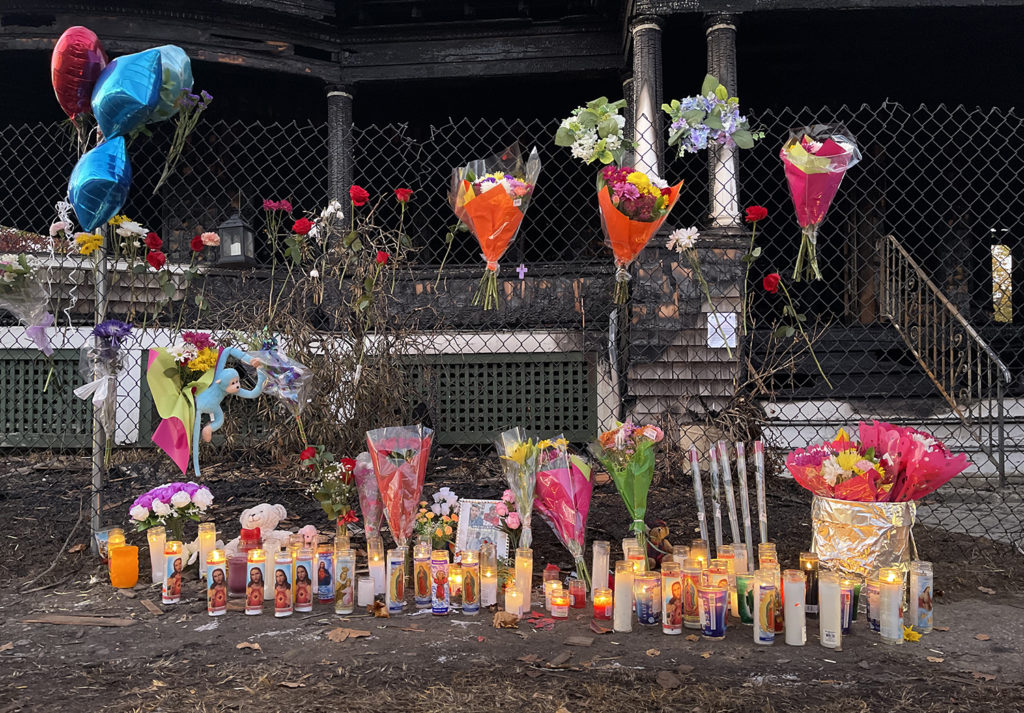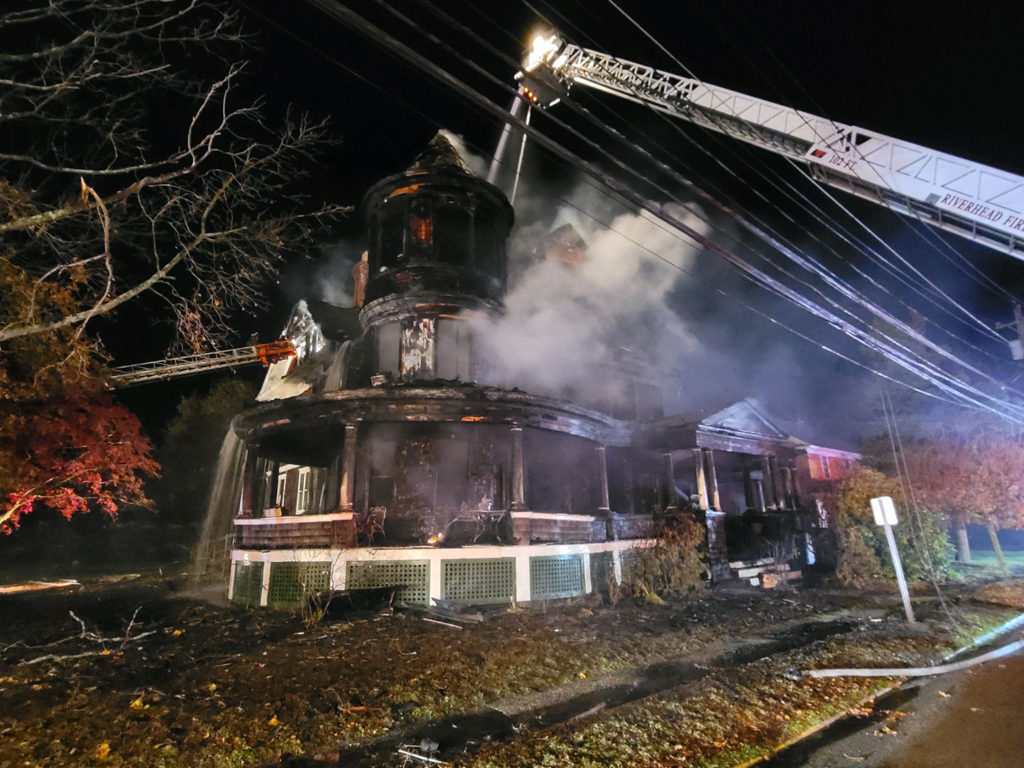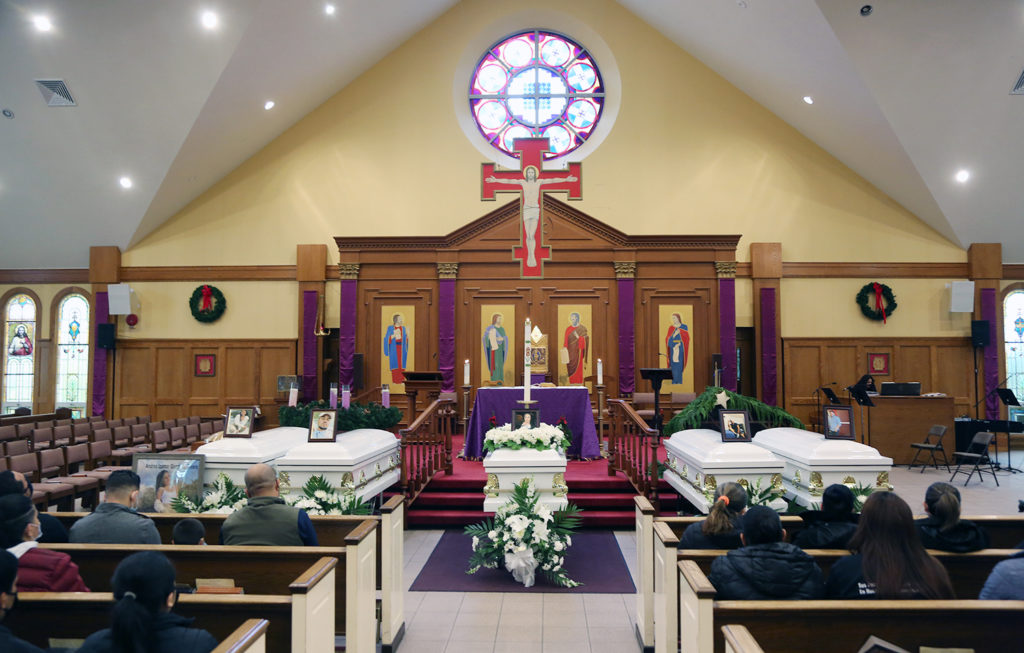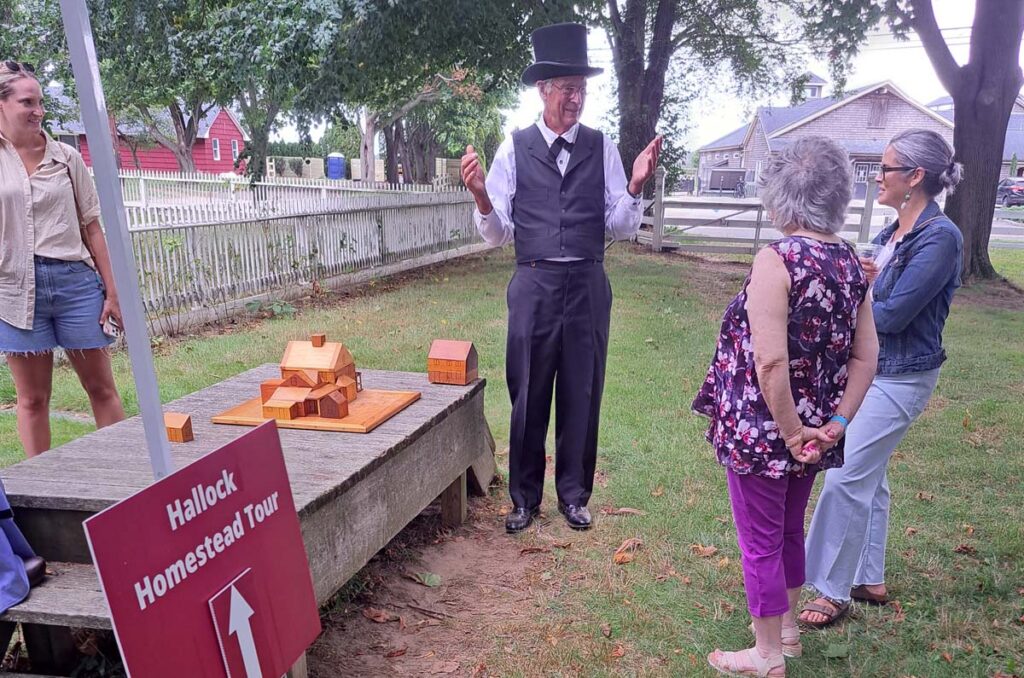‘The flames were too high;’ Police investigation sheds new light on how tragic house fire unfolded

As the first 911 calls alerted the Riverhead Fire Department of smoke in the area of East Second Street on the night of Nov. 16, officer Anthony Chiaramonte of the Riverhead Town Police Department raced to the scene. He arrived at the large, three-story home at 10:38 p.m. and could see the front of the home was already fully engulfed in flames.
Mr. Chiaramonte headed to the rear of the century-old home to assist residents evacuating from the first floor apartment. While a newcomer to the police department, having officially joined the ranks in early 2021, Mr. Chiaramonte was also an experienced firefighter in Riverhead. In 2015, he was one of four firefighters honored by the News-Review for a late night rescue at a Middle Road home. The heroic actions by those firefighters to save a man’s life was credited at the time as the first successful rescue from a burning building by a Riverhead firefighter in 20 years.
On this November night, Mr. Chiaramonte returned to the front of the East Second Street home and attempted to gain access to the second floor. The heat and flames that engulfed the staircase made it impossible.
He heard an explosion. And he could hear several voices screaming and crying from an area of the Victorian style home’s turret, which he relayed to the first firefighters arriving on scene.
Five residents of one family, all natives of Guatemala, would later be found dead together on the third floor, marking one of the deadliest fires in Riverhead Town history. A clearer picture of how the tragic night unfolded, and the frantic attempts by residents and first responders to extinguish the fire and reach those trapped on the upper floor, can now be seen through reports by the Suffolk County Police Department, which had both homicide and arson investigators at the scene, and the Riverhead Town Police Department. A 36-page report obtained through a Freedom of Information Act request details how the fire quickly consumed the front portion of the house when a pretzel container used to dispose cigarette ash ignited previously disposed of smoking materials. That ignited a nearby wicker couch on the porch and then wood shingles and the structure itself, the report says.
Suffolk police had initially suspected smoking to be a likely cause of the fire and confirmed to the News-Review last month that conclusion following the investigation. The report released last week outlines more specifics of the accidental fire and how investigators reached their conclusion.

‘It’s a terrible tragedy’
On the afternoon after the fatal fire, Det. Lt. Kevin Beyrer, the head of Suffolk’s homicide division, said the fire appeared to be accidental and investigators were exploring smoking as a potential cause among other factors being investigated. He referred to the incident as a “terrible tragedy.”
The home featured one apartment on the first floor where the property owner lived, two apartments on the second floor and one apartment on the third floor. Keith Polchies, who lived in a second floor rear apartment with his girlfriend, Cindy Wilson, was one of the first residents to notice the fire. He had arrived home from work that evening, ate dinner in his apartment and sat down to watch a movie. When the movie ended, he walked his dog, heading west toward the nearby Montauk Distilling Co. As he returned, he noticed a resident of the third floor sitting at a table on the east side of the front porch. The man, whom he did not know personally, was finishing a cigarette and put it out in an ashtray on the table. He then dumped the ashtray into the large plastic pretzel bucket that was kept on the porch deck, according to the report.
About 25 minutes later, he heard a bang at the front door and ran downstairs. He could see a fire near the wicker couch on the southeast corner of the porch. He ran back inside to grab a fire extinguisher. The fire was already too large.
“I then ran back inside the house and started screaming for everyone to get out,” Mr. Polchies said in a written statement. He went back inside and could see his girlfriend, the landlord, Carmella Cannella, and residents of the other second-floor apartment.
“By that time the flames were too high and we couldn’t go back out the front door,” he wrote. “We all then went to the back of the house and we escaped together through the rear door.”
Police had just arrived on scene.
“From the time I went back inside the house and saw the fire, I never saw any of the residents of the third floor,” Mr. Polchies said.
Loraine Starsiak, who lived in a second-floor apartment with her adult son Adam, was in her bedroom when she heard her son yell “FIRE!” and to evacuate. As she ran downstairs, she could see the wicker couch engulfed in flames and the fire was progressing upward toward the porch roof. She also attempted to use a fire extinguisher “without success.”
She told investigators that their apartment featured three functioning battery-powered smoke detectors. And while the smoke detector had not sounded, the smoke had also not yet reached their apartment. She told investigators that she had visited the third floor and observed smoke detectors there as well. Ms. Cannella, the landlord, also told police that there hardwired smoke detectors in the third-floor apartment.
Adam Starsiak told investigators he first noticed the smell of something burning but could not locate the source. He later heard banging outside the front door and as he started downstairs he could see a glow out the stained glass window. He then saw the wicker couch on fire. He told investigators he considered trying to move the couch off the porch, but the fire was already too big. At that same time, Mr. Polchies arrived with the fire extinguisher.
It was a neighbor, William Dawson, who banged on the front door of the house. He had gotten home from work earlier in the night and was in his bedroom when he heard a popping sound coming from outside the window. He noticed the fire next door and ran down to alert his neighbors and called 911. The fire was already starting to grow upward and catching columns, he said.
Among the first on scene that night was Riverhead fire marshal John Dahlem, who arrived before the first firefighters. The fire was beneath the front porch overhang and Mr. Dahlem attempted to enter through the rear to search for occupants without success, the report says.

Investigation begins
To begin the process of determining the cause of fire, investigators conduced a Bilancia Ignition Matrix, an evaluation of all the potential fuel and ignition sources. All potential fuel sources except for the wicker couch and pretzel bucket that contained the cigarette butts were ruled out. The only ignition source that could not be ruled out was a cigarette that was not properly disposed of.
Investigators tried to determine whether a cigarette butt dropped or placed on the couch itself could have started the fire. The timing, however, didn’t align for that to be the likely cause. Investigators met with special agents of the Bureau of Alcohol, Tobacco, Firearms and Explosives to identify if cigarettes that were not properly disposed of in a plastic container could be a “competent ignition source as well as a first fuel ignited.”
An experiment showed cigarettes reached flaming combustion in approximately seven minutes with no other fuel than the cigarettes butts themselves and a light wind, the report says.
Investigators also noted a scientific paper published in the “National Research Council of Canada” that found wicker chairs were capable of igniting quickly and could easily spread to adjacent combustibles.
Investigators determined that the fire progressed through a window or door opening in the common area of the first floor and up the common stairwell to partially collapse the second and third floor.
The five members of the family on the third floor were all found “in an area where they appeared to have sought refuge from the fire,” the report says.
There were two interior staircases that accessed the second floor. While the main staircase in the front common area appeared to have partially collapsed, a second staircase accessed through a rear closet near the kitchen remained mostly intact. At the landing area, a “significant collapse” was seen where the third floor had collapsed into the second floor. Investigators used drone equipment to survey the third floor and most of the fire damage appeared to be in the area surrounding the main staircase, the report says. The third floor room of the turret remained structurally intact and was where the five victims were found. No fire escapes were located on the exterior of the structure.

Five victims
The five victims were Zonia Dinora Rivera Mendoza, 42, Andrea Isamar Gonzalez Rivera, 16, Carlos Cífelo Penate Rivera, who died one day after his 25th birthday; Carlos Alberto Ramos Aguirre, 25, and Duglas Edgardo Rivera Aguirre, 27.
Andrea and Carlos Cífelo were children of Ms. Rivera Mendoza. The other two victims were cousins of the children.
A funeral service was held in late December, more than a month after the fire, at St. John the Evangelist R.C. Church in Riverhead. Their bodies were transported back to Guatemala where another funeral service was held.








